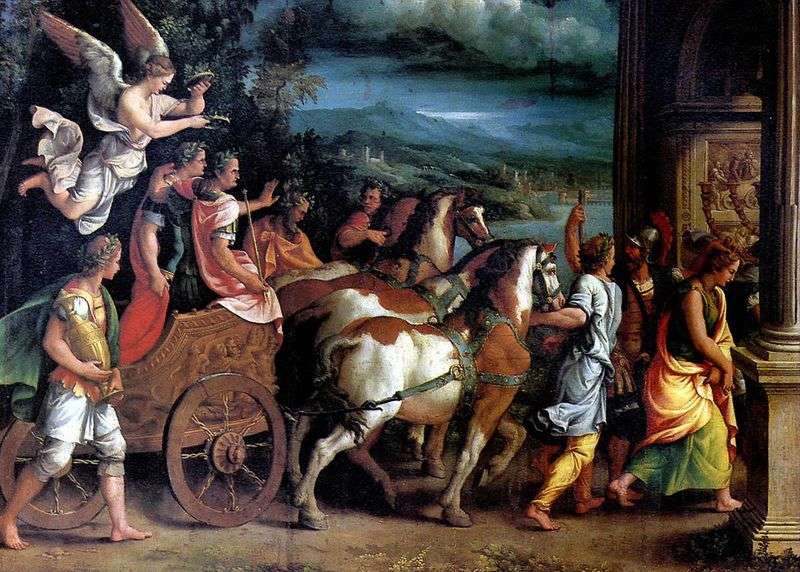
Giulio Romano is known in the history of Italian art as a painter and architect. His work was a complex evolution – from the style following the principles of the High Renaissance, the artist moved to Mannerism. Giulio Romano studied with Raphael in Rome.
Together with him, he painted the Stanz and Loggias of the Vatican, and after the teacher’s death he completed the work he had begun in the Villa Madama. In the period of work in the workshop of Raphael, Julio Romano developed a characteristic painting style. It has sharply marked outlines of the design and opaque shadows.
In this manner, the artist executed a large number of altar paintings. From 1524 Giulio Romano worked in Mantua. He decorated the palace of the Mantuan marquises Palazzo del Te, which had become his main architectural work, built by him.
In the Mantuan paintings, the artist used a number of techniques new to the Italian monumental-decorative art of the time, connected with the dismemberment of the pictorial space and the appeal to illusionist effects. Giulio Romano’s Mantuan works are a classic example of Roman Mannerism. Other famous works: “Madonna with a cat.” OK. 1523. National Gallery of Capodimonte, Naples; “Holy Family”. OK. 1524. Church of Santa Maria del Anima, Rome.
